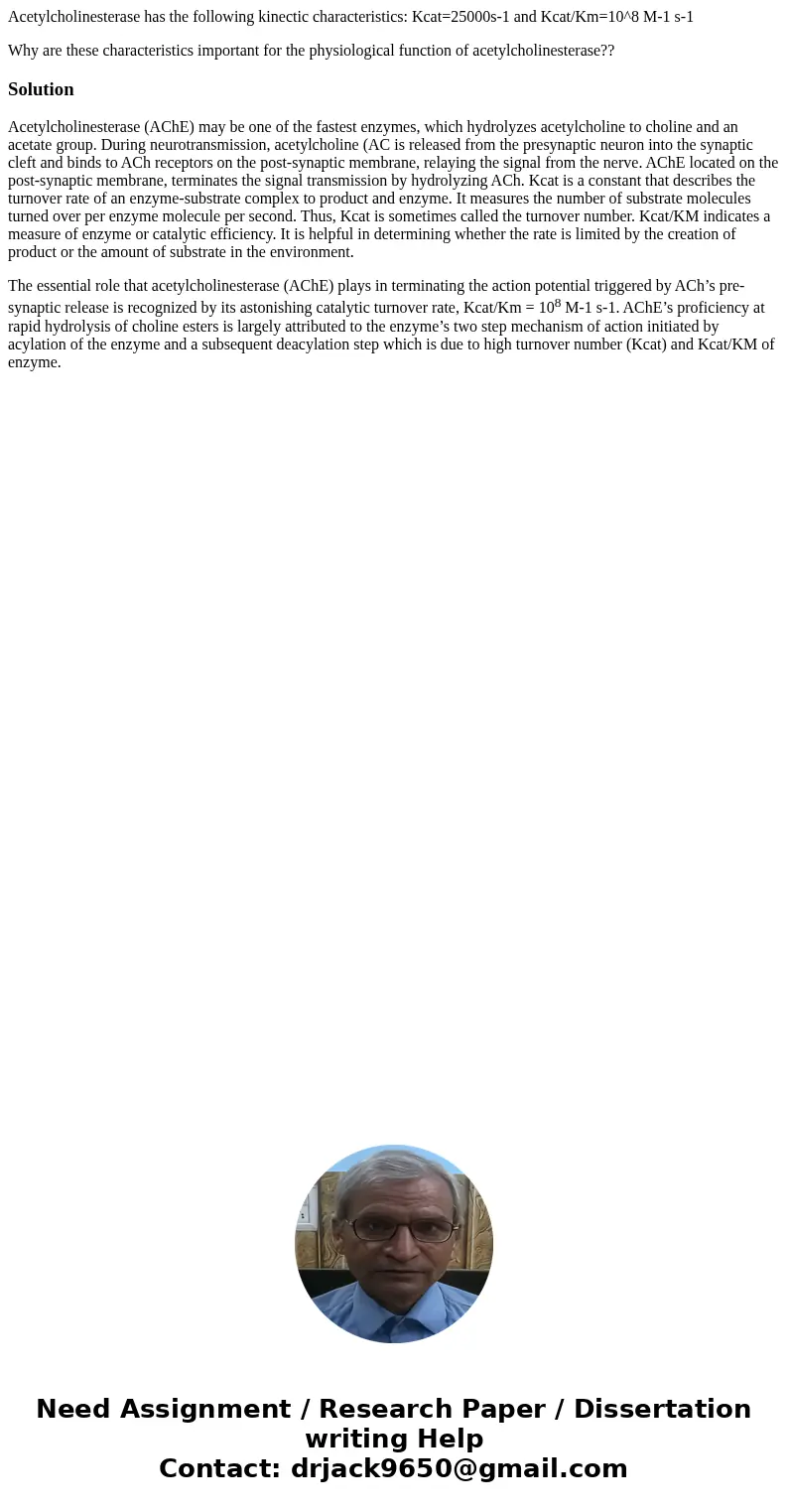Acetylcholinesterase has the following kinectic characterist
Acetylcholinesterase has the following kinectic characteristics: Kcat=25000s-1 and Kcat/Km=10^8 M-1 s-1
Why are these characteristics important for the physiological function of acetylcholinesterase??
Solution
Acetylcholinesterase (AChE) may be one of the fastest enzymes, which hydrolyzes acetylcholine to choline and an acetate group. During neurotransmission, acetylcholine (AC is released from the presynaptic neuron into the synaptic cleft and binds to ACh receptors on the post-synaptic membrane, relaying the signal from the nerve. AChE located on the post-synaptic membrane, terminates the signal transmission by hydrolyzing ACh. Kcat is a constant that describes the turnover rate of an enzyme-substrate complex to product and enzyme. It measures the number of substrate molecules turned over per enzyme molecule per second. Thus, Kcat is sometimes called the turnover number. Kcat/KM indicates a measure of enzyme or catalytic efficiency. It is helpful in determining whether the rate is limited by the creation of product or the amount of substrate in the environment.
The essential role that acetylcholinesterase (AChE) plays in terminating the action potential triggered by ACh’s pre-synaptic release is recognized by its astonishing catalytic turnover rate, Kcat/Km = 108 M-1 s-1. AChE’s proficiency at rapid hydrolysis of choline esters is largely attributed to the enzyme’s two step mechanism of action initiated by acylation of the enzyme and a subsequent deacylation step which is due to high turnover number (Kcat) and Kcat/KM of enzyme.

 Homework Sourse
Homework Sourse